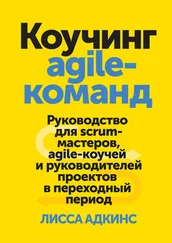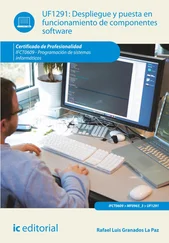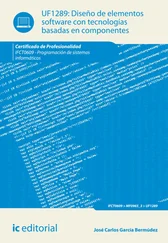A Game of Invention and Communication
We have seen that software development is a group game, which is goal seeking, finite, and cooperative. The team, which consists of the sponsor, the manager, usage specialists, domain specialists, designers, testers, and writers, works together with the goal of producing a working and useful system. In most cases, team members aim to produce the system as quickly as possible, but they may prefer to focus on ease of use, cost, defect freedom, or liability protection.
The game is finite because it is over when the goal is reached. Sometimes delivery of the system marks the termination point; sometimes the end comes a bit later. Funding for development usually changes around the time the system is delivered, and new funding defines a new game. The next game may be to improve the system, to replace the system, to build an entirely different system, or possibly to disband the group.
The game is cooperative because the people on the team help each other to reach the goal. The measure of their quality as a team is how well they cooperate and communicate during the game. This measure is used because it affects how well they reach the goal.
If it is a goal-directed cooperative game, what does the game consists of? What constitutes moves in the game?
The task facing the developers is this: They are working on a problem that they don't fully understand, one that lives in emotions, wishes, and thoughts, and that changes as they proceed. They need to
· Understand the problem space
· Imagine some mechanism that solves the problem in a viable technology space
· Express that mental construct in an executable language, which lacks many features of expression, to a system that is unforgiving of mistakes
To work through this situation, they
· Use props and devices to pull thoughts out of themselves or to generate new ideas that might help them understand the problem or construct a solution.
· Leave trails of markers for those who will come later, markers to monitor and test their progress and their understanding. They use those markers again, themselves, when they revisit parts of their work.
Software development is therefore a cooperative game of invention and communication. There is nothing in the game but people's ideas and the communication of those ideas to their colleagues and to the computer.
Looking back at the literature of our field, we see a few people who have articulated this before. Peter Naur did, in his 1986 article "Programming as Theory Building," and Pelle Ehn did, in "Scandinavian Design: On Participation and Skill" (as well as his magnificent but out-of-print book Work-Oriented Design of Software Artifacts). Naur and Ehn did this so well that I include those two articles in near entirety in Appendix B. Robert Glass and colleagues wrote about it in “Software Tasks: Intellectual or Clerical?” (Glass 1992), and Fred Brooks saw it as such a wickedly hard assignment that he wrote the article "No Silver Bullet" (Brooks 1995).
The potential consequences of this cooperative game of invention and communication are outlined in the remainder of this chapter. The remainder of the book examines those consequences.
Software and Engineering
Considering software development as a game with moves is profitable, because doing so gives us a way to make meaningful and advantageous decisions on a project. In contrast, speaking of software development as engineering or model building does not help us make such advantageous decisions.
The trouble with using engineering as a reference is that we, as a community, don't know what that means. Without having a common understanding of what engineering is, it is hard to get people to work "more like engineering." In my travels, people mostly use the word "engineering" to create a sense of guilt for not having done enough of something, without being clear what that something is.
The dictionary is clear as to what "engineering" is: "The application of science and mathematics by which the properties of matter and the sources of energy in nature are made useful to man" (Webster's New Collegiate Dictionary, 1977).
That definition does not explain what doing engineering is about. In my experience, "doing engineering" involves creating a trade-off solution in the face of conflicting demands. Another person, though, wrote to me and said, "A basic concept of engineering is to address problems in a repeatable and consistent manner."
This is a common mistake, confusing the act of doing engineering work with the outcome of doing engineering work.
The outcome of doing engineering work is the plant, which is run while specific people watch carefully for variations in quantity and quality of the items being manufactured.
The act of doing engineering work is the ill-defined creative process the industrial engineer goes through to invent the manufacturing plant design. That process is not run with statistical controls, measuring quantity and quality of output. Like software development, it runs as a cooperative game of invention and communication, with individual people of different backgrounds huddling together to come up with a workable design.
When people say, "Make software development more like engineering," they often mean, "Make it more like running a plant, with statistical quality controls." But as we have seen, running the plant is not the act of doing engineering.
The other aspect of "doing engineering" is looking up previous solutions in code books.
Civil engineers who design bridges are not supposed to invent new structures. Given a river and a predicted traffic load, they are supposed to take soil samples and use the code books to look for the simplest structure that handles the required load over the given distance, building on the soil at hand. They base their work on centuries of tabulation of known solutions.
This only marginally fits the current state of software development. We are still in the stage where each team's design is supposed to be better than the neighbor's, and the technologies are changing so fast that few code books exist. As time goes by, more of these code books will be available. Today, however, there are still more variations between systems than there are commonalities.
Let's return to considering "engineering" to mean "thinking and making trade-offs." These are appropriate phrases. We would like our software developers to think, and to understand the trade-offs they select. However, these phrases do not provide guidance in running projects.
Software and Model-Building
Many people have advocated model building over the last decade, including Ivar Jacobson, who declared, "Software development is model building."
Characterizing software development as engineering may not provide much guidance for running projects, but characterizing it as model building leads directly to inappropriate project decisions.
If software development were model building, then a valid measure of the quality of the software or of the development process would be the quality of the models, their fidelity to the real world, and their completeness. However, as dozens of successful project teams around the world have told me: "The interesting part of what we want to express doesn't get captured in those models. The interesting part is what we say to each other while drawing on the board." "We don't have time to create fancy or complete models. Often, we don't have time to create models at all."
Where I found people diligently creating models, software was not getting delivered. Paying attention to the models interfered with developing the software.
Constructing models is not the purpose of the project. Constructing a model is only interesting as it helps win the game.
The purpose of the game is to deliver software. Any other activity is secondary. A model, as any communication, is sufficient, as soon as it permits the next person to move on with her work.
Читать дальше










